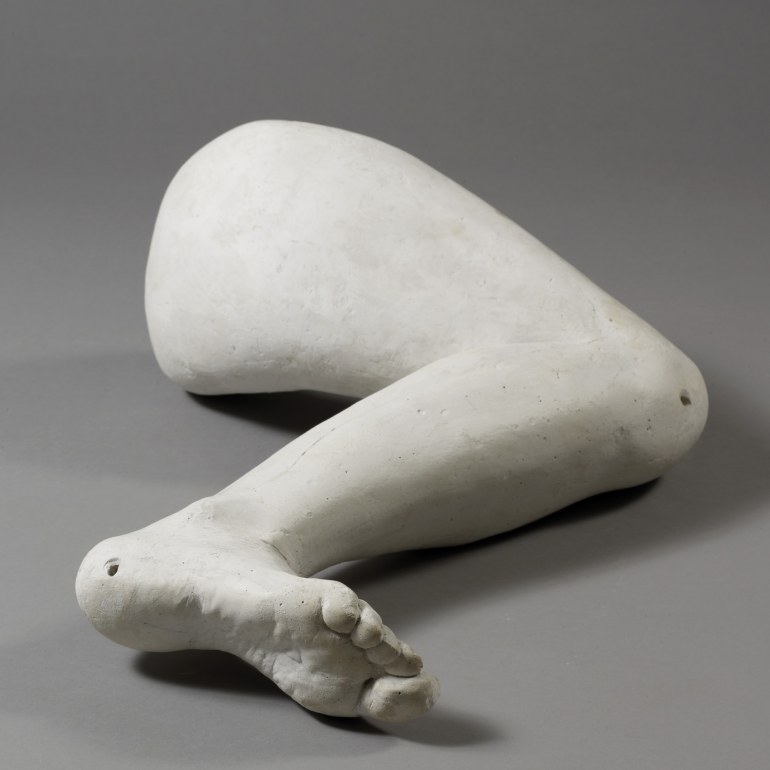 Alina Szapocznikow " Sculpture Lamp III ( Fetish IX) ", 1970 , courtesy of the Polish Institute in Tel Aviv
Alina Szapocznikow " Sculpture Lamp III ( Fetish IX) ", 1970 , courtesy of the Polish Institute in Tel Aviv
Artworks by Alina Szapocznikow have only recently become more widely known and their outstanding achievement is being discovered 40 years after the artist’s death. After last year's success, with exhibitions in New York, Los Angeles, Brussels and Paris, Szapocznikow’s work goes to Israel. The exhibition Body Traces in the Tel Aviv Museum of Art is the next step in exploring this Polish sculptor of Jewish origin, and presenting it for an international audience.
The Tel Aviv Museum of Art’s exhibition page notes of the artist: Jewish sculptor and proto-feminist Alina Szapocznikow was one of Poland’s outstanding post-WWII artists. Within two decades, she exchanged the language of classical sculpture with an idiosyncratic lexicon of new shapes, unusual materials, processes and themes that held a dialogue with the contemporary art scene and her own biography. Szapocznikow expanded the definition of sculpture in a deconstructive process of trial and error, while casting parts of her own body directly: an indexical imprint that testifies to the body’s deterioration.
Sculptures, drawings and photographs from the 60s and early 70s will be shown. This was the most interesting and experimental period of the artist's work, who at the time was living in Paris (she lived in Poland before, and was included in the mainstream of socialist realist art). The exhibition will include sculptures of deformed and dismembered body parts or bodies transformed into everyday objects - casts of mouth and bellies in the form of lamps and pillows. Work made using photographs embedded in resin will be also be on view.
(...) The moment in which she suspended all her previous work is a plaster cast from 1962, which shows for the first time, the potential of casting as a fingerprint of the body, as a gesture of simple, intimate and inherent vulnerability. At the same time, it is the first gesture of the fragmentation of the body, its cutting and lumping, and taking into account the issue of ready- mades with individual autobiographical hints - so characteristic of Szapocznikow’s creativity - notes the text to the exhibition catalog, written by Marta Dziewańska, curator Museum of Modern Art in Warsaw, which has prepared the retrospectives of Szapocznikow in the U.S. and in Belgium.
 Alina Szapocznikow " leg " , 1962, courtesy of the Polish Institute in Tel Aviv
Alina Szapocznikow " leg " , 1962, courtesy of the Polish Institute in Tel Aviv
Alina Szapocznikow’s work fits in different contexts: it is considered proto - feminist, post- surreal, neo-realistic, as well as associated with pop-art. Some sculptures by Szapocznikow represent struggles with the trauma of her youth (she survived the Holocaust), and others - with an incurable cancer. In some pieces, the body in the work of the artist is treated with irony as the building material of lamps and ashtrays; in other pieces, it is destroyed and altered by naturalistic causes of disease.